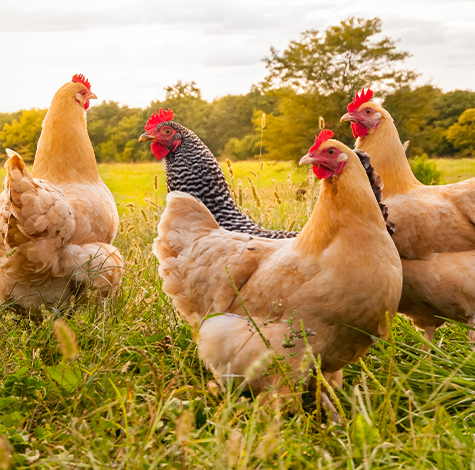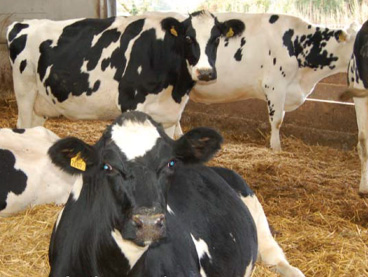The turnout process creates a substantial change in diet for the cow and if this transition is not managed carefully, cows could experience symptoms of lowered milk production and reduced butter fat.
As we emerge from a cold and wet winter here in the UK, there are signs across the country that spring has finally sprung. As well as flowers in bloom, the grass growing, and lambs appearing in the fields, farmers across the country will begin to turnout their cattle.
During the colder months, cows are kept inside to protect them from harsh weather conditions and to ensure they have access to a consistent supply of feed and water. Once springtime begins and the soil temperature rises, cows are let outside to pasture. This process is called turnout. It is worth noting that this turnout process creates a substantial change in diet for the cow and if this transition is not managed carefully, cows could experience symptoms of poor digestion and lowered milk production.
Planning the transition from winter rations to grazing can help farmers ensure that the change in their cows’ diet is smooth and decrease the chance of disruption to their gut health and performance.
Many farmers are concerned with lower milk yields, lowered butter fat, loss of body condition, and overall herd health issues such as acidosis. Due to the extreme rainfall, managing grass conditions has been a particular challenge for UK farmers this year.
At UFAC, we believe that several things should be considered when turning out your cattle, including dry matter intakes, a gradual turnout, and supplementing key vitamins and minerals and essential fatty acids. Rotating fields and applying fertiliser can also help manage grass conditions.
Gradual turnout:
Turning cows out to grass creates a substantial change in diet for the cow. It takes around three weeks for the bugs in the rumen to adapt to significant diet changes such as this, so it is important to manage the transition to grazing gradually. Even a few hours of on/off grazing by day, when the weather conditions allow, will mean that the rumen bugs can adapt to fresh grass.
Maintaining milk yields:
Maintaining milk yields is vital for farmers. However, milk production can be affected if grass intakes drop and cows are not able to consume enough energy. Grass intakes can vary daily due to growth conditions such as weather. Supplements can help ensure that cows eat sufficient nutrients to meet their milk production potential, even when intake is reduced.
Mitigating butterfat reduction
Early Spring grass typically has low fibre content, resulting in minimal ‘scratch factor’. This causes low saliva stimulation to buffer acid in the cow’s rumen. Early Spring grass also has high sugars, which makes it rapidly fermentable in the rumen. This leads to higher intakes, reduced rumen pH, and a degree of acidosis, something that farmers are worried about this turnout season.
By adding fibre sources and relevant supplements, you can help slow the rate of passage through the rumen, which can improve grass utilisation and digestion.
Fertility
A cow’s ability to consume adequate levels of spring grass will vary depending on weather conditions and other factors. This can increase the chance of your cows experiencing inadequate energy intake to meet requirements. As the cows use more energy to support body condition during early lactation, more energy is needed for milk production and fertility.
Loss of body condition
Body condition loss typically refers to the loss of body fat in the cow. If cows can’t consume enough feed to meet energy requirements to produce adequate milk yields, body fat stores will be released and used to supply the energy needed to increase milk production- this process is sometimes referred to as ‘milking off their backs’.
If a cow consumes more energy, it uses less body fat to support milk production and, therefore, will not experience a loss of body condition.
How can UFAC help?
UFAC’s Omega Cream is a combined C16:0 fat and omega 3 fatty acids supplement that provides outstanding all-around performance, including improved milk yields, health, milk constituents, and fertility.
Delivering high milk constituents combined with excellent reproductive performance, omega cream contains 70% C16:0 fat and is ideal for herds on milk composition-based contracts. Its high inclusion of C16:0 supports butterfat production in high-yielding and late-lactation cows while also increasing overall energy supply.
Interested in learning more about UFAC products? Fill out the form below, and a member of our team will be in touch with more information, or contact our Regional Business Managers directly.
Steve Willats
M: 07827 249157
South West and Wales
Richard Lapthorne
M: 07788 963 487
North England and Scotland
James Hastings-Molyneux
M: 07538 763 832
South East and Midlands


 Back to News
Back to News 



